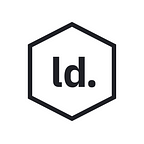An interview with Peter Merholz
Peter tells us what he thinks design leaders and organizations are still doing wrong.
Peter Merholz has been a long term friend and inspiration to Clearleft, he has been active in digital design and product for 25 years, most notably in building premier user experience consultancy, Adaptive Path. He now advises teams on design organizations and leadership. He co-wrote Org Design for Design Orgs (O’Reilly), the first book focused on the organizational, managerial, and operational challenges of building in-house design teams.
He first spoke at Leading Design London in 2017 where he shared his insights and experiences as a design leader. He outlined the complete role of the Leveraged Design Leader and the challenges many designers face as they embrace leadership.
It’s been two years since we caught up with him so we wanted to hear what he thinks has changed during this time.
What do you see design leaders and organizations still doing wrong?
Peter: The A-Number-1 shortcoming of most design organizations is that they don’t have an explicit charter (mission, vision, values). And so they get overwhelmed, and are under-appreciated, because it’s not clear exactly what the team stands for within their organization. They take on too much work, they have trouble prioritizing, and they don’t advance toward a clear agenda.
Recruiting and hiring for designers, specifically design leaders, is pretty much a shit-show.
What are the most common questions designers ask you? And why do think people are still asking?
Peter: The most common type of question I receive revolves around how design can best work with agile. In particular, when I teach workshops, there are inevitably people whose company has gone through a consultant-led “agile transformation” and who are wondering how what I teach can help them overcome what they’ve been put through.
Strictly about leadership, the most common question is probably around the distinction between a “senior” designer, a “lead” designer, and a “design manager.” How do you know when someone has achieved a new level. What should their responsibilities be?
Org Design for Design Orgs — has been out for three years now and has been very successful within the design community. If you were to do a revision of the book would you change or adapt any of the content? If so, why?
Peter: HA! Yes. I would make more explicit the distinction between a marketing/communication design team and a product design team (though I think both should still report to a single Head of Design). We yadda-yadda’ed that in the book, and the difference is real and warrants care in how it is managed.
I would place greater emphasis on the role(s) of design leadership, specifically team leadership. Even though it’s already the longest chapter, I’d likely extend what we wrote about recruiting and hiring to include more resources to support the process.
In our chapter on professional development, I’d introduce the explicitly dual-track levels framework that I created after writing the book.
I’d use the word “DesignOps” (it didn’t exist when we wrote the book), and be more explicit about establishing a DesignOps function.
I’d extend the Evolution of a Design Organization from 5 stages to 7.
I’d expand the material around defining a charter and making explicit a team’s shared sense of purpose.
What are your thoughts on companies that re-organize their design teams every 3 years, swinging from separate to embedded?
Peter: Design teams need to own their own organization model. A clear charter should serve as a foundation for how the team operates, and inform how they organize to do their work. It’s perfectly acceptable, and in many cases preferable, for a design team to be organized differently than their cross-functional peers.
I’ve found that when design teams truly own their own organization, they remain much more stable than the product and engineering orgs, which typically re-org every 9–18 months.
__
Catch Peter at Leading Design Festival March 2021.
